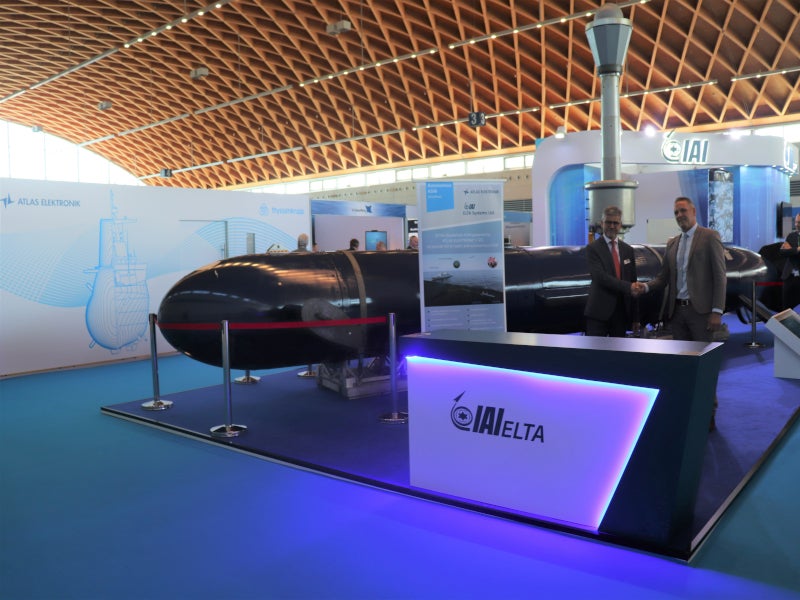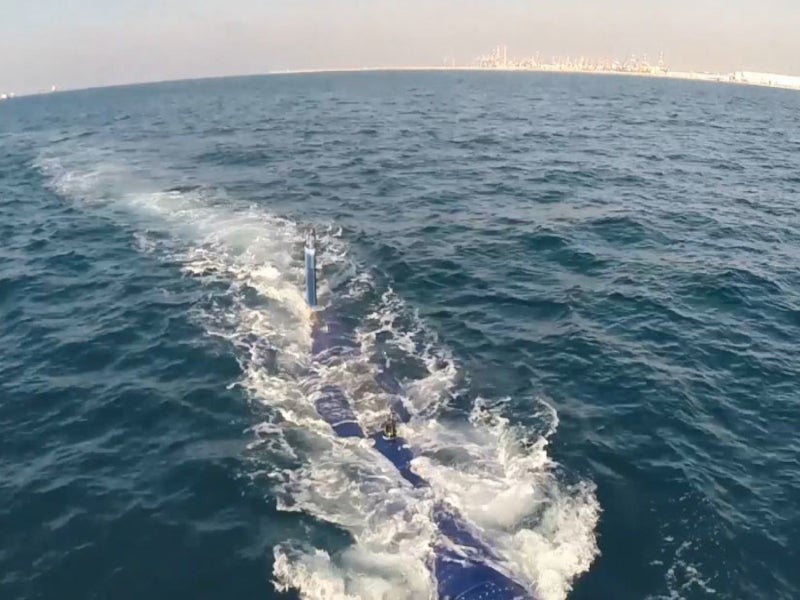BlueWhale™ is a large autonomous underwater vehicle (AUV) system jointly developed by ELTA Systems, a subsidiary of Israel’s state-owned aerospace and defence company Israel Aerospace Industries (IAI) and Atlas Elektronik, a subsidiary of German marine electronics company Thyssenkrupp Marine Systems.
The AUV can conduct covert intelligence operations both above and below the ocean surface and perform other crucial missions in open seas, difficult-to-reach coastal waters and strategically constricted areas. It is suitable for underwater missions including intelligence, surveillance and reconnaissance (ISR), electronic warfare support measures (ESM) and mine countermeasures (MCM).
The AUV was launched at the Undersea Defence Technology (UDT) Conference and Exhibition in Rostock, Germany, in May 2023.
BlueWhale AUV design and features
The BlueWhale AUV measures 10.9m long and 1.12m in diameter and weighs 5.5t. It can remain submerged for 10 days to 30 days depending on the mission and perform stealthy intelligence-gathering operations. The electrical power provided by the high-efficiency battery bank allows the AUV to perform long-endurance missions.
Based on ELTA’s BlueWhale autonomous underwater multi-mission platform, the AUV features a deployable and unique telescopic mast typical of a submarine. The mast contains a patented container to protect the sensors and equipment when submerged.
Capable of diving to a depth of up to 300m, the AUV’s operational speed is between 2kt and 3kt. It can attain a maximum speed of 7kt when submerged. The AUV can be easily transported by land, air and sea in a 40ft shipping container.
Sensors and communications
The AUV features a special sensor suite with a wide range of advanced surface and sub-surface payload sensor systems and communication options to carry out multiple missions.
The surface payload options include an active electronically scanned array radar, electro-optical and infrared sensors, and signals intelligence fitted to the mast to identify sea and coastal targets. The sub-surface options include towed array sonar (TAS), synthetic aperture sonar (SAS), active and passive flank array sonar (FAS), and magnetic sensors for mine detection and verification.
The secure, long-range satellite communications antenna on the mast allows the vessel to be operated and managed through an advanced command and control (C2) system. The C2 system enables functionalities including constant situational awareness, facilitating call-to-action commands, serving as an events blogger and remote operation.
The AUV also has an intelligent onboard controller for managing sensors, communications, missions, power resources and other equipment.
Sonar systems of BlueWhale
The TAS system used by the AUV is based on Atlas Elektronik’s active towed array sonar (ACTAS) platform, a deep-water sonar system. It employs a low-frequency sonar that offers extensive area coverage and maintains high sensitivity, enabling the AUV to operate at depths previously inaccessible to traditional sonar systems.
The AUV also incorporates Atlas Elektronik’s towed passive sonar triplet array, which functions at depths to avoid detection. An Atlas transmitter deployed from either an autonomous or manned surface vessel allows the AUV to effectively locate and track submarine targets through bi-static means. The combination of the towed passive sonar triplet array and advanced transmitter solution is optimised to perform autonomous operations requiring long endurance.
The FAS sensors are attached to either side of the vessel to detect surface vessels and submarines. The SAS system, also attached to the sides of the vessel, detects mines and performs high-resolution sea bottom mapping.
BlueWhale AUV missions
The BlueWhale is a first-of-its-kind submarine system with onboard capabilities for detecting and monitoring targets both on the ocean surface and underwater. It has the capability to process the sensor data onboard, with real-time, actionable information transmitted to the C2 centre through a dedicated broadband-secured satellite channel.
The TAS system supports bi-static submarine detection, while the FAS and TAS sensors help in gathering acoustic passive intelligence.
As well as ISR, ESM and MSM, the AUV can perform missions including: anti-submarine warfare; forward scout and patrol for conventional submarine; oceanology expeditionary support; piracy, terrorism and illegal immigration detection, and special force support including forward scout and mule.






